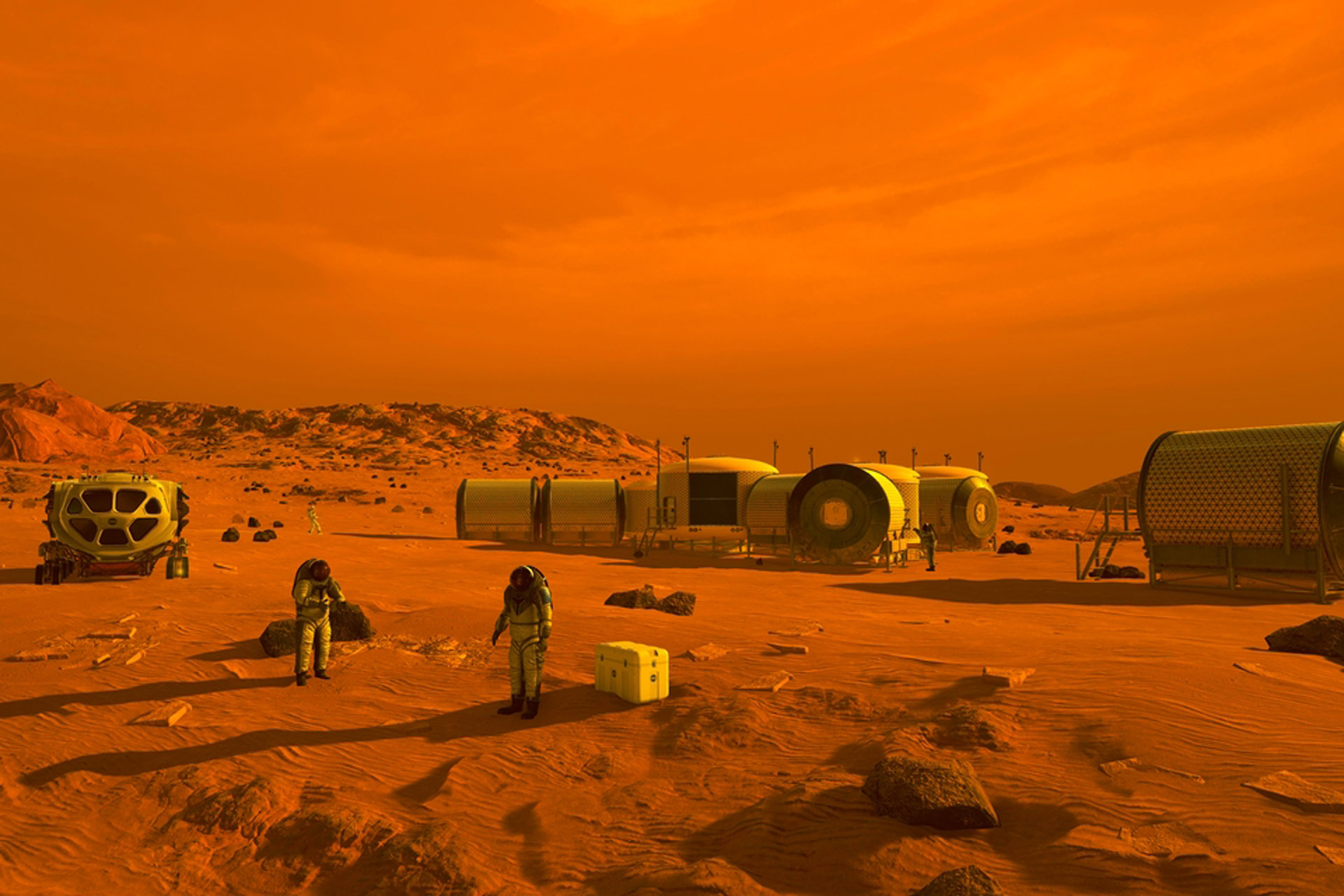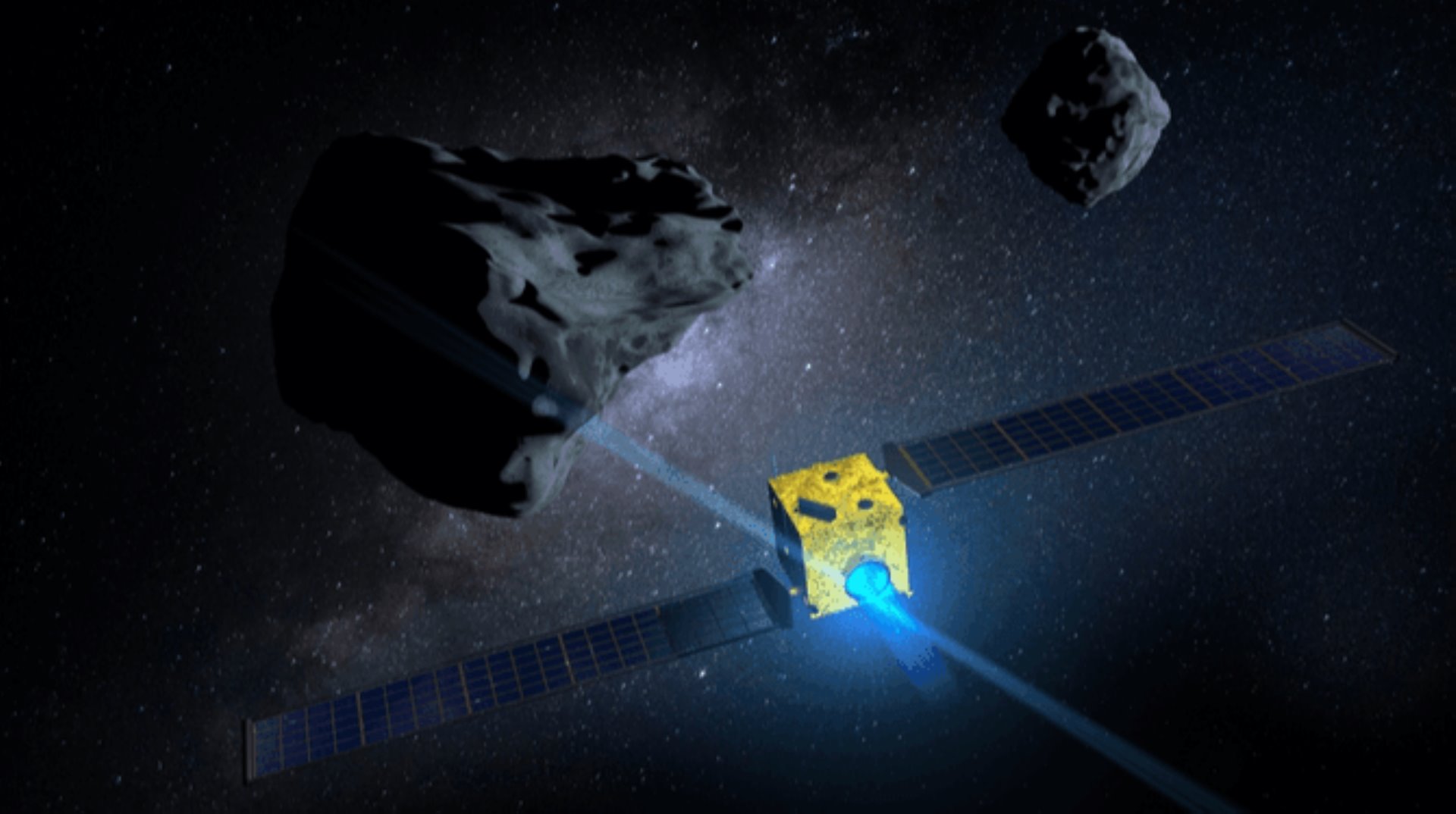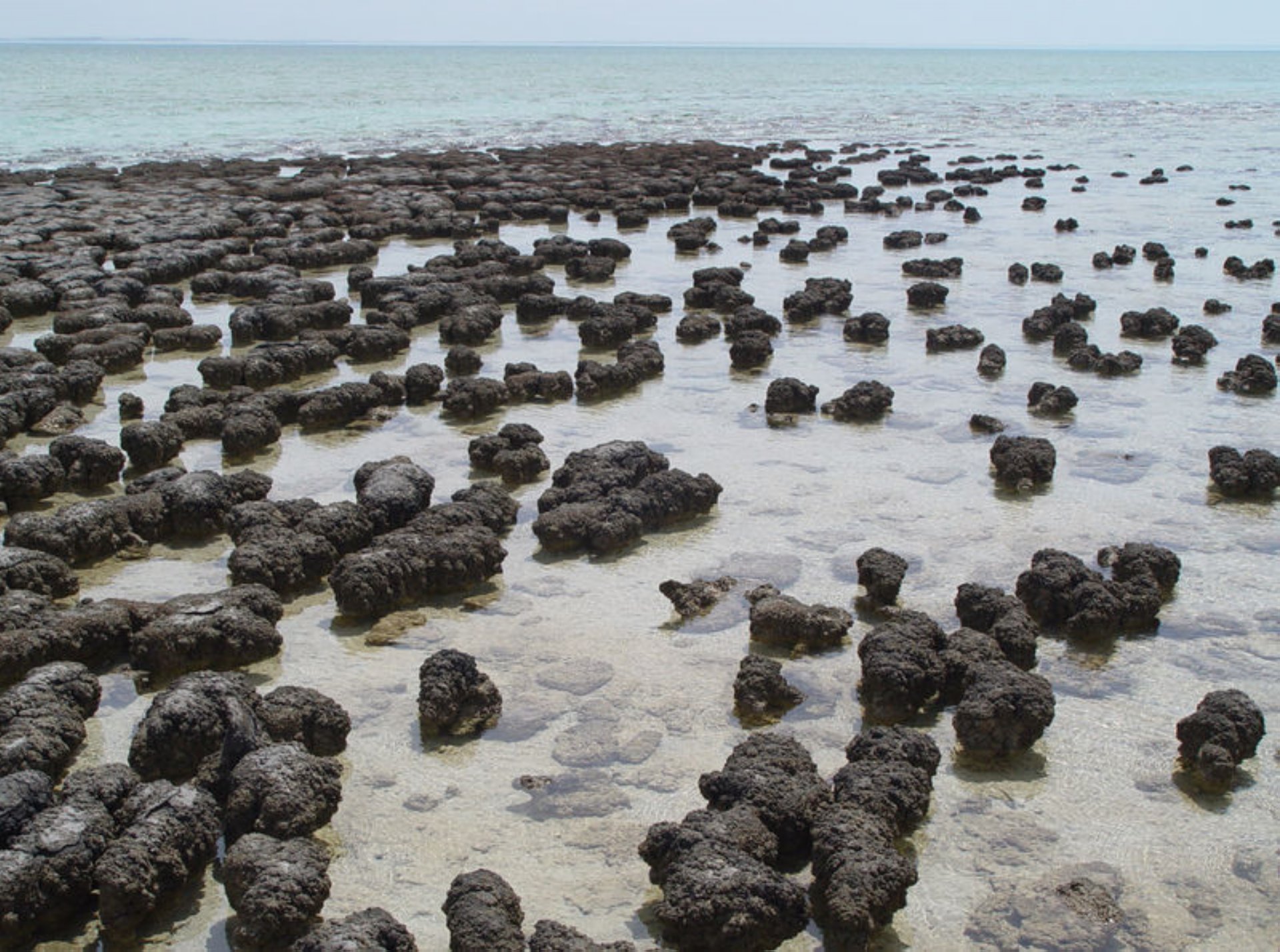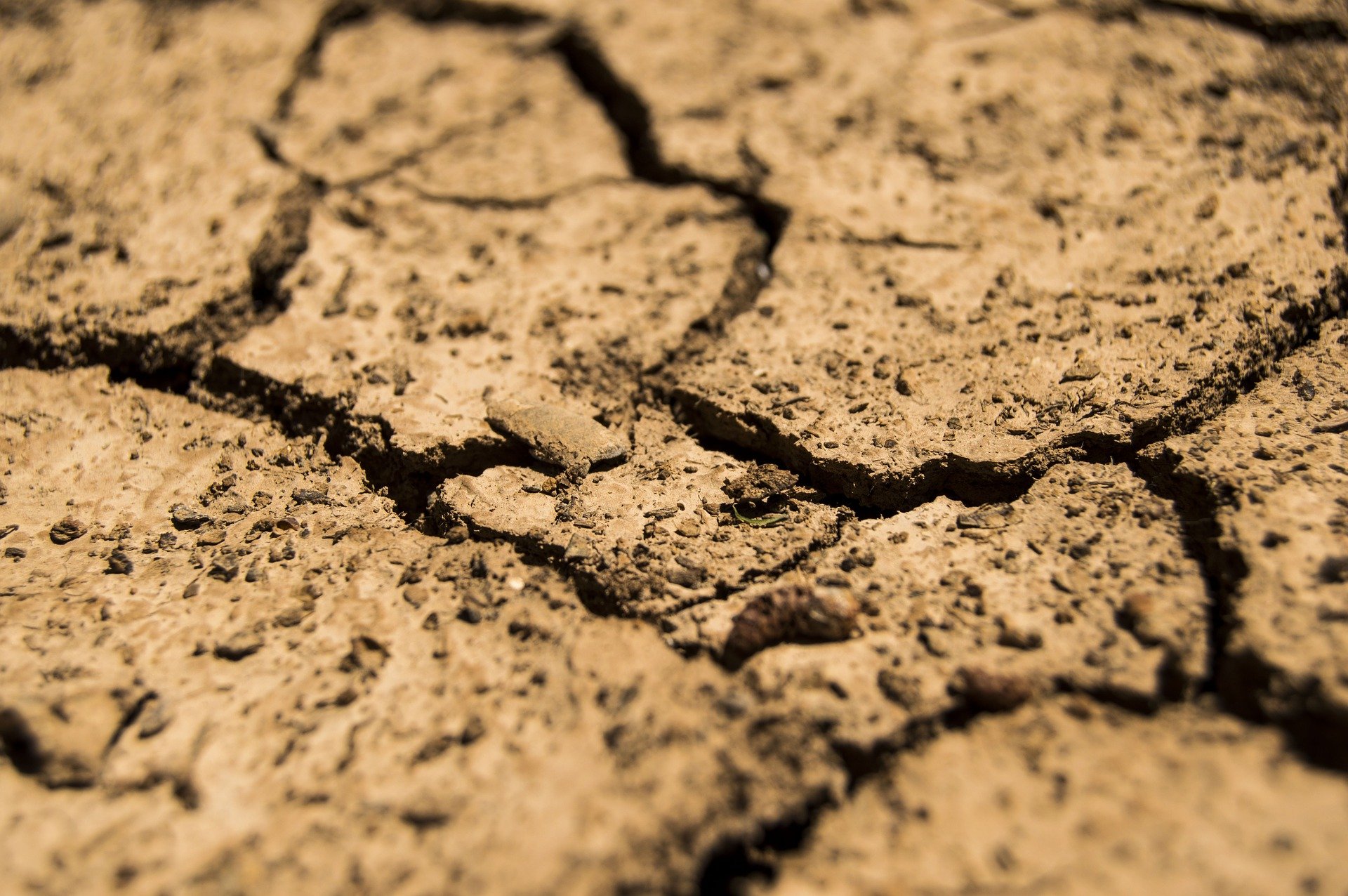Mars Part 4/4 - The significance of Mars.
Mars is smaller and further from the sun, what can we imagine and what can the red planet mean for humanity?
Properties of the planet.
We assume a sperical shape for Mars. A mistake one can make without thinking is: saying that if the diameter of Mars is only half of the Earth, then the volume of Mars is also only half of the Earth. Formulas allow us to calculate everything and that’s how we get ahead:
- Mars is about half the size of Earth in diameter and about one-tenth the size of Earth in mass. From this one can deduce the force of gravity and it is 0.38 on Mars. This means that a 50 kg object on Mars weighs only (50 × 0.38 =) 19 kg. We have already seen the astronauts make great leaps on the moon, well here it will also be the case, albeit slightly less. Because of this low gravity, the chance of a meteorite hitting Mars is about half as high as on Earth, while the proximity of the asteroid belt increases this chance.
- That same diameter, of course, also determines the mantle surface of the sphere. People have calculated that and they say that Mars has a land area as large as the land area of the Earth. So by putting it that way we are just forgetting the surface area of our oceans. We get 100% added in terms of space, but then there is no square km of water surface provided on Mars.
Mars rotates on its axis in just over 24 hours (so that’s a lucky coincidence). A day on Mars is called “sol” and lasts 24 hours 39 minutes and 35 seconds. The axis of rotation is also tilted like Earth’s and that means there is a change of seasons on Mars (that’s a nice touch). A year on Mars does last as long as 1.9 years on Earth or 668 sols (that will take some getting used to those long summers). To be able to keep track of time during a future colonization of Mars, the Darian calendar was developed as early as 1985. The starting points were the length of a day on Mars (a sol) and the time Mars takes to complete one orbit around the sun. One Mars year was divided into 24 months of 27 or 28 sols. A sol, like a day on Earth, is divided into 24 (Mars) hours. Each Mars hour again into 60 (Mars) minutes and a Mars minute into 60 (Mars) seconds. The danger of confusion is present. Since a sol lasts 2.7% longer than a day on Earth, a Martian hour, minute and second also last 2.7% longer than the Earth counterpart of these time units. It’s going to be difficult to get to an appointment on time.
At the poles, ice sheets of frozen water (ice) and carbon dioxide (dry ice) occur. The polar caps grow and melt over the seasons. The changing appearance of the poles can be observed from Earth. The ice caps are promising because their volume together may match the volume of our ice mass at the North Pole. It has been calculated that the amount of water stored in the ice sheets on Mars is sufficient to cover the entire Martian surface with an 11 m thick layer of water when melted.
Mars has two moons. The impact of these moons on a large water mass (like the tides near us) would be very small:
- Phobos can be seen rising and setting 3 times per sol. This moon is highly visible.
- Deimos is seen rising and setting again 3 sols later. This moon is nothing more than a bright dot.
The liquid core of Mars is almost completely solidified, a small part in still liquid:
- So there have certainly been volcanoes but currently there is no active volcano on Mars. The largest volcano on Mars is Olympus Mons, a whopper of an extinct volcano that rises as much as 25 km above the surface. It is said to be the largest volcano in our solar system.
- Some researchers believe that the elongated patterns/valleys in the Martian surface show that plate tectonics once took place on Mars. Therefore, if continental plates have ever been shifting on Mars, this has also ended and thus we can say that quakes no longer occur on Mars.
- There was once a Martian magnetism. The rotation of the planet relative to its once liquid core caused a magnetic field with a north pole and a south pole. A system very important in deflecting harmful ionizing rays from the sun. We must therefore state that these rays reach the Martian surface relatively unhindered. Their harmful influence is still under investigation. The only bright spot is that the greater distance from the sun also means a reduction in radiation.
The topography of Mars clearly shows two parts:
- The northern hemisphere consists of lower-lying volcanic plains with fewer impact craters.
- The southern hemisphere is highland covered with impact craters.
Where the difference between the two hemispheres originated is unknown. One hypothesis is that the entire northern hemisphere of Mars was once covered by a huge ocean. Impacts from meteorites left no trace there. The water could possibly have come from volcanism.
Of all the planets, the climate on Mars is most similar to that of Earth. The surface temperature on Mars can vary between -140 °C (in winter) to 20 °C (in summer). The average annual temperature is -50 °C. The presence of huge water masses (like the oceans near us) could be a stabilizing factor here. For now, possibly liquid water will be present only briefly and in limited places. A notable seasonal phenomenon on Mars are dust storms. These storms may cover the entire planet. This could be a tough nut to crack. It is possible that it was once warmer on Mars, it is thought to be explained by a thicker atmosphere.
The atmosphere around Mars is very tenuous. The air pressure on Mars is only 1% of the air pressure on Earth. The composition is very similar to the primordial atmosphere on Earth. There is mainly carbon dioxide (95%), supplemented by nitrogen (3%), the noble gas argon (1.6%) and also extremely small traces of oxygen and methane. This high concentration of carbon dioxide is a challenge for scientists to extract oxygen from it. However, there is constantly a lot of dust in the air. Those tiny ferrous particles color the skies toward orange.

This photo can be seen on the Nasa website. With current technology it is impossible to complete this process.
Greening of Mars.
Will humanity be able to make Mars habitable? Can we do terraforming on the red planet? Although Mars’ current atmosphere is largely composed of CO2, it is far too thin and cold to allow liquid water - essential for life.
Liquid water on Mars will evaporate or freeze rapidly at this time:
- Scientists had planned to release the carbon dioxide trapped in the surface of Mars so that the atmosphere would grow thicker and serve as a blanket to warm the planet. But now it appears that the amount of carbon dioxide on Mars is not nearly enough to warm the entire planet.
- The atmospheric pressure on Mars is about 1% of Earth’s. The amount of available carbon dioxide could increase the atmospheric pressure to 7%. And that is not enough.






Comments